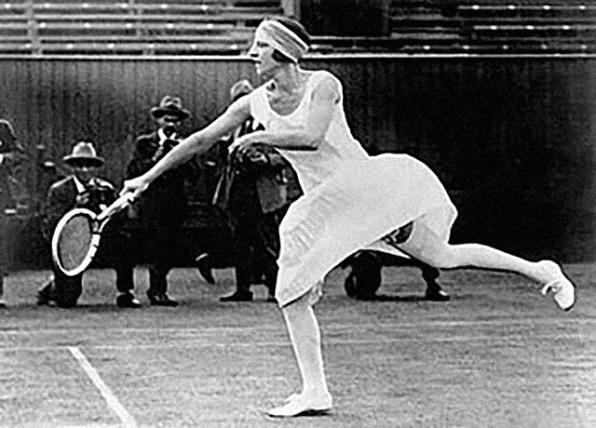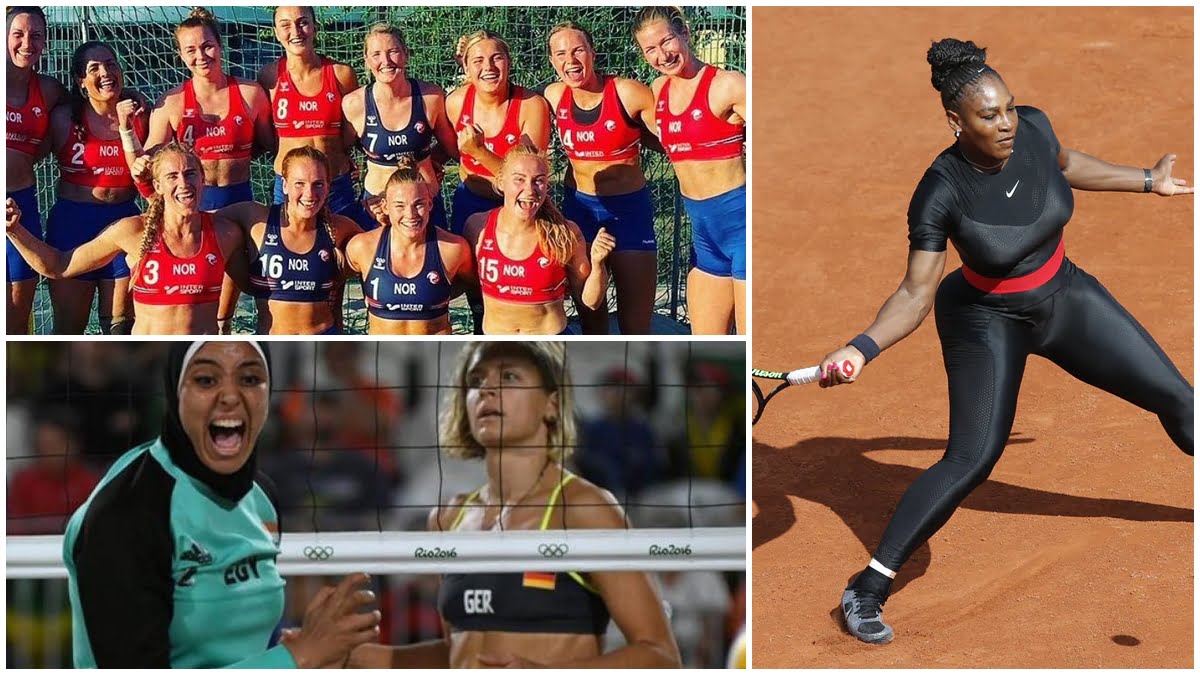When the Norwegian women’s beach handball team refused to play in bikini bottoms during a game in the sport’s Euro 2021 tournament, they were fined $2,000. As a protest against the sport’s standard bikini bottom design, the Norwegian women’s team wore thigh-length elastic shorts during their bronze medal match against Spain last week in Bulgaria. The design was described as “embarrassing” by the president of the sport’s Norwegian Federation. According to a statement from the European Handball Association’s Disciplinary Commission, the team was fined a total of 1,500 euros ($1,700) for “improper clothing.”

Unlike male players, who are permitted to wear tank tops and shorts with a maximum length of 4 inches above the knee, female players are required to wear midriff-baring tops and bikini bottoms with a “close fit and a cut on an upward angle toward the top of the leg,” as well as a maximum side width of 4 inches, according to International Handball Federation regulations.
Unlike male players, who are permitted to wear tank tops and shorts with a maximum length of 4 inches above the knee, female players are required to wear midriff-baring tops and bikini bottoms with a “close fit and a cut on an upward angle toward the top of the leg,” as well as a maximum side width of 4 inches, according to International Handball Federation regulations. In an interview with NBC News by phone from Oslo, Norwegian Handball Federation President Kre Geir Lio said that the players’ clothing was “not appropriate for the activity” when they were playing in the sand. He explained that the women’s team trains and competes in “whatever they want, just like the boys” at home in Norway, but that when they travel abroad, they must adhere to the International Handball Federation’s dress codes.
Also read: Surge In Domestic Violence After Euro Cup Final: Organised Sports, Hypermasculinity And Aggression
Each Norwegian handball rebel was fined 150 euros (approximately $170), which the Norwegian Handball Federation has stated that it will pay out of their own pocket. However, the Norwegian women claim that they have been complaining to the International Hydrographic Organization (IHF) about the bikini bottoms issue since at least 2006, and that this act of defiance was not unexpected. This, in their opinion, is a sexist double standard because they must compete in skimpy uniforms, while their male counterparts are not required to do so.
In an interview with Norwegian public broadcaster NRK, team captain Katinka Haltvik said she and her teammates had made a “spontaneous” decision to swap out their black bikini bottoms for blue bike-style shorts in order to spark conversation — and, hopefully, rule changes.
They were aware that they would be in violation of International Handball Federation regulations, but they decided to go ahead with the uniform change anyway.
NRK reported that Haltvik expressed hope that a breakthrough would be achieved and that she would be able to play in the league of her choosing next summer. “People applauded us for taking the initiative and going in front of several teams. Such fines are not within the financial reach of all teams.” Furthermore, she stated that beach handball “should be viewed as an inclusive sport rather than an exclusive sport.”
A No-Win Situation
Former professional golfer Anya Alvarez says that women athletes are frequently placed in a no-win situation, with some being told that they must compete in revealing uniforms that feminise and sexualise their appearance by appealing to the male gaze, while others are chastised for their clothing being too revealing, a form of moral policing directed at female athletes.
Historically, men have determined what clothing is appropriate for women to compete in, and this contradiction has come to be more obvious now. Deirdre Clemente, a historian of the American fashion industry, notes that it is not surprising when an outfit worn by a female athlete generates outrage. She recalls Suzanne Lenglen, a French tennis star of the late 1910s who shocked onlookers with her knee-length tennis dress.

Most of the time, when dictating what is appropriate for female athletes to wear, these dress codes take social norms and male gaze into consideration, but they rarely consider what the players would be most comfortable in while playing.
Clemente notes that the fact that they participate in sports while wearing skirts was cited as evidence that they were not serious about their sport. Neither the function of these athletes’ uniforms nor their physical comfort while wearing them were of any concern to the male powers-that-be. She brings to light a sportswriter named Paul Gallico who argued, “Women who play sports stick out places when they play, wear funny clothes, get out of breath, or perspire.” He didn’t like that because “it’s a lady’s business to look beautiful, and there are hardly any sports in which she seems able to do it.” She discusses how in the 1920s, female
